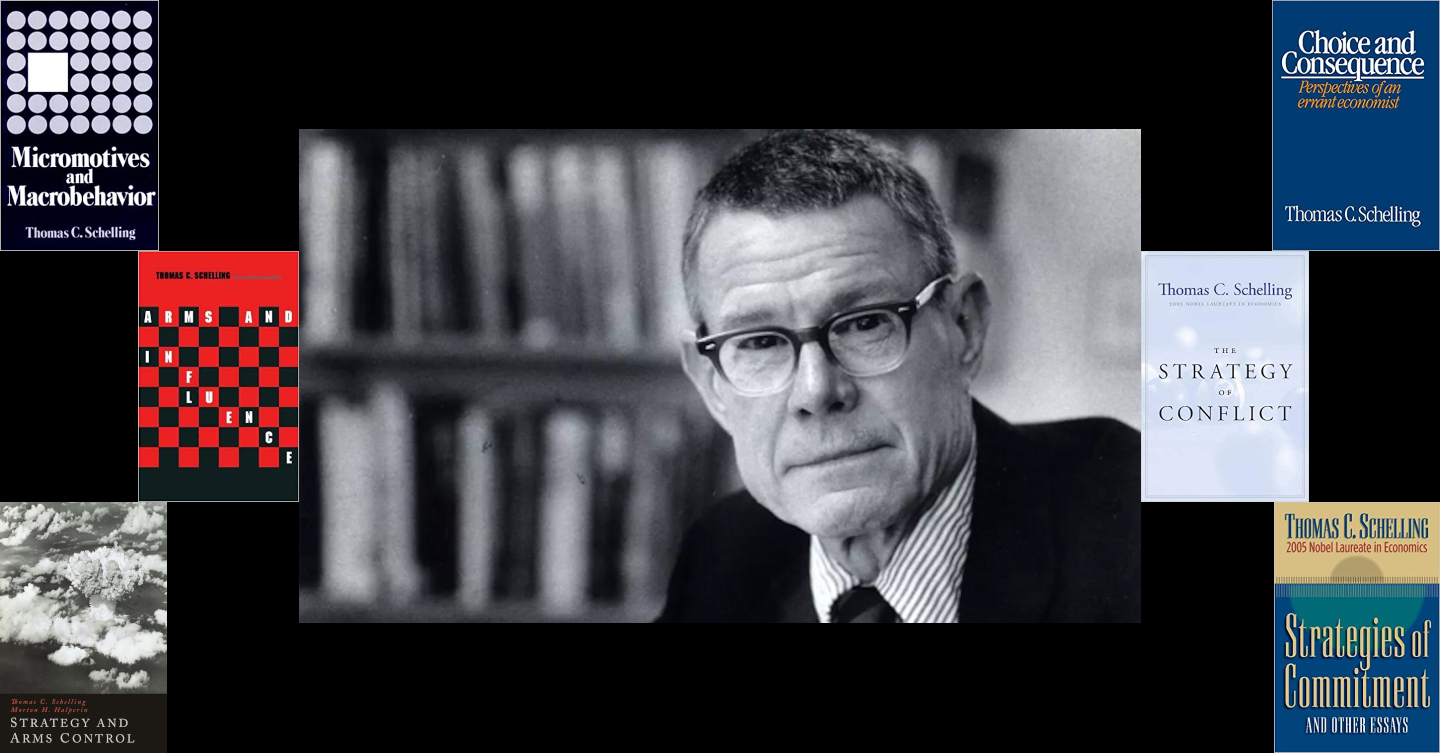
A BETTER PEACE welcomes back Tami Davis Biddle to our GREAT STRATEGISTS series. She joins WAR ROOM podcast editor Ron Granieri in the virtual studio to discuss the contributions of Thomas C. Schelling to the Cold War nuclear strategy realm. Schelling, an economist, was a great contributor to the concepts of compellence, coercion and deterrence and strategic threat analysis. Tami and Ron examine Schelling’s continued relevance today and even talk about how his theories can be taught in the classroom.
He created this system of thinking about the use of force, which I think is so helpful to us and helps us understand the logic of basically how we utilized force, how we think about it…
Podcast: Download
Subscribe: Apple Podcasts | Spotify | Amazon Music | Android | Pandora | iHeartRadio | Blubrry | Podchaser | Podcast Index | TuneIn | Deezer | Youtube Music | RSS | Subscribe to A Better Peace: The War Room Podcast
Tami Davis Biddle is Professor of National Security Affairs at the U.S. Army War College. Ron Granieri is an Associate Professor of History at the U.S. Army War College and the Editor of A BETTER PEACE. The views expressed in this presentation are those of the speakers and do not necessarily reflect those of the U.S. Army War College, U.S. Army, or Department of Defense.
Photo Credit: Alvaro Conde via Creative Commons Attribution-Share Alike 4.0 International





If we come to understand that the question “How much do you want for the pen?” — if we come to understand that this question relates to SOMETHING THAT WE DESIRE,
Then, I suggest, we must consider these matters from the position of:
a. Not “knowing the enemy” and “knowing yourself” but, rather, from the position of:
b. “Knowing yourself” (and, specifically, what you want) and, FROM THIS EXACT SUCH PERSPECTIVE, “knowing your enemy.”
Example:
Since at least the 18th Century, U.S./Western domestic and foreign policies have, significantly, been designed to better provide for — and better benefit from — such things as capitalism and the global economy. (THIS, IN ESSENCE, DEFINING “WHAT WE WANT”).
This requires today, as in the past, that certain political, economic, social and/or value “changes” be accomplished — both at home and abroad. (TO WIT: WHAT IS REQUIRED — WHAT NEEDS TO BE DONE — FOR US TO GET WHAT WE WANT.)
As to these such “change” requirements — designed to better provide for and better benefit from such things as capitalism and the global economy — here is an example from here at home:
“First (U.S. Supreme Court case) ‘Lawrence’ furthers the deconstruction of the States as moral communities, capable of legislating in ways that might inhibit the functioning of markets for the sake of higher-order collective values.” (Item in parenthesis here is mine.)
(See the Catholic University of America, Columbus School of Law paper “Moral Communities or a Market-State: The Supreme Court’s Vision of the Police Power in the Age of Globalization,” by Antonio F. Perez and Robert J. Delahunty. See Page 694.)
There are exceptionally well-known benefits — and exceptionally well-known costs — associated with these such “change” requirements, for example, as described here:
“Capitalism is the most successful wealth-creating economic system that the world has ever known; no other system, as the distinguished economist Joseph Schumpeter pointed out, has benefited ‘the common people’ as much. Capitalism, he observed, creates wealth through advancing continuously to every higher levels of productivity and technological sophistication; this process requires that the ‘old’ be destroyed before the ‘new’ can take over. … This process of ‘creative destruction,’ to use Schumpeter’s term, produces many winners but also many losers, at least in the short term, and poses a serious threat to traditional social values, beliefs, and institutions.” (From the book “The Challenge of the Global Capitalism: The World Economy in the 21st Century,” by Robert Gilpin, see the Introduction.)
“All in all, the 1980s and 1990s were a Hayekian moment, when his once untimely liberalism came to be seen as timely. The intensification of market competition, internally and within each nation, created a more innovative and dynamic brand of capitalism. That in turn gave rise to a new chorus of laments that, as we have seen, have recurred since the eighteenth century: Community was breaking down; traditional ways of life were being destroyed; identities were thrown into question; solidarity was being undermined; egoism unleashed; wealth made conspicuous amid new inequality; philistinism was triumphant.” (Also from the book “The Mind and the Market: Capitalism in Western Thought,” in this case, from the section therein on Friedrich Hayek)
From the perspective offered here, “experts” such as David Kilcullen way back in 2006 — and in this case writing about how these such “change” requirements began to adversely effect the Greater Middle East — came to see these matters from the perspective of:
a. The U.S./the West being engaged in “revolutionary warfare” now — much as it had been back in colonial times — and
b. Our enemies being engaged in “resistance warfare” now — much as they had been back in those days.
“Similarly, in classical theory, the insurgent initiates. Thus, Galula asserts that ‘whereas in conventional war, either side can initiate the conflict, only one – the insurgent – can initiate a revolutionary war, for counter-insurgency is only an effect of insurgency’. Classical theorists therefore emphasise the problem of recognising insurgency early. Thompson observes that ‘at the first signs of an incipient insurgency … no one likes to admit that anything is going wrong. This automatically leads to a situation where government countermeasures are too little and too late.’ But, in several modern campaigns – Iraq, Afghanistan, Pakistan and Chechnya, for example – the government or invading coalition forces initiated the campaign, whereas insurgents are strategically reactive (as in ‘resistance warfare’). Such patterns are readily recognisable in historical examples of resistance warfare, but less so in classical counter-insurgency theory.
“Politically, in many cases today, the counter-insurgent represents revolutionary change, while the insurgent fights to preserve the status quo of ungoverned spaces, or to repel an occupier – a political relationship opposite to that envisaged in classical counter-insurgency. Pakistan’s campaign in Waziristan since 2003 exemplifies this. The enemy includes al-Qaeda-linked extremists and Taliban, but also local tribesmen fighting to preserve their traditional culture against twenty-first-century encroachment. The problem of weaning these fighters away from extremist sponsors, while simultaneously supporting modernisation, does somewhat resemble pacification in traditional counter-insurgency. But it also echoes colonial campaigns, and includes entirely new elements arising from the effects of globalisation.”
(See Kilcullen’s “Counterinsurgency Redux.)
Bottom Line Thought — Based on the Above:
The question “How much do you want for the pen?;” this such question allows one to understand that there are times when:
a. To know one’s enemies, this can only be accomplished by first:
b. Knowing oneself — and what is that we want — and thus what this will require of ourselves and others.
“Knowing oneself” — thus in the manner that I describe it here — allowing us to easily see how (a) our efforts to achieve state and societal transformation both here at home and there abroad (b) understandably triggered a Thucydides “honor, interest, and fear” response in both locales?
If “compellence” can be defined as “a direct action that persuades an opponent to give up something that is desired” (Britannica),
Then, in the context of our “revolutionary”/”transformative” attempts (in support of the purported needs of capitalism and the global economy — see my initial comment above):
a. What specifically is the “direct action” that we can (and should) take
b. Against our “resisting transformation” opponents both here at home and there abroad, which will
c. “Persuade” these opponents to “give up” that which we desire (to wit: their time-honored ways of life, their time-honored ways of governance, and their time-honored values, traditions, etc. — all of which we seek to replace with more “modern,” “market-friendly” versions of same)?
(Obviously this not the first time in history that these issues have become manifest and have had to be addressed, and accordingly, not the first time these questions have had to be asked and answered; this, as Kilcullen — in pointing us for example toward colonial times in my initial comment above — appears to make clear?)